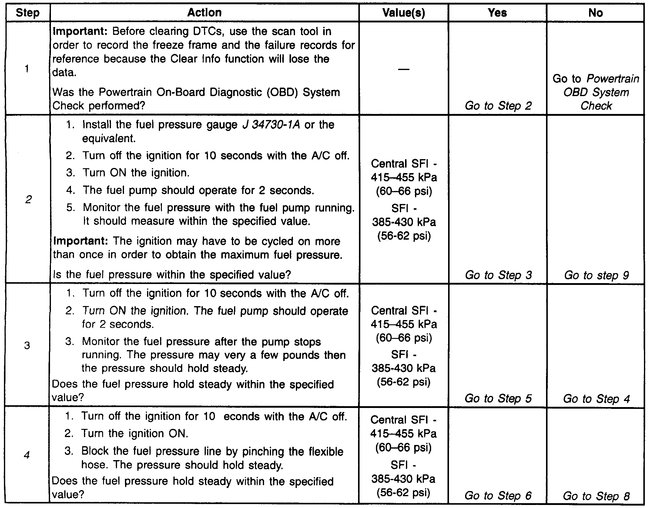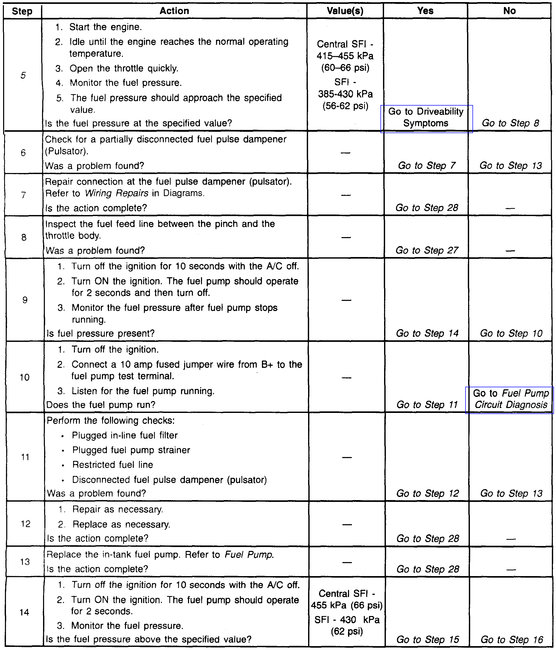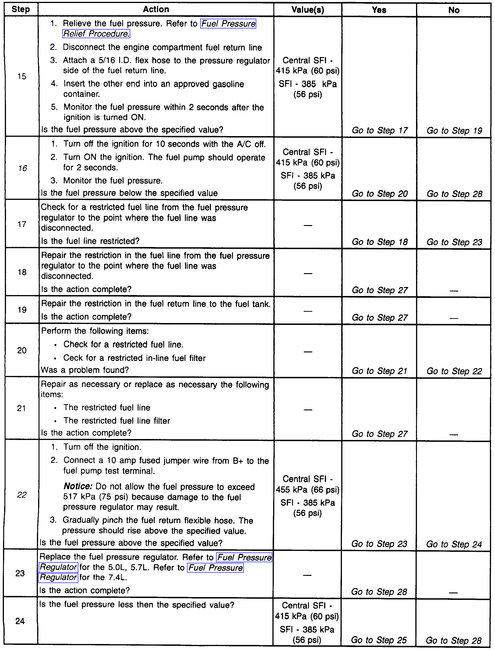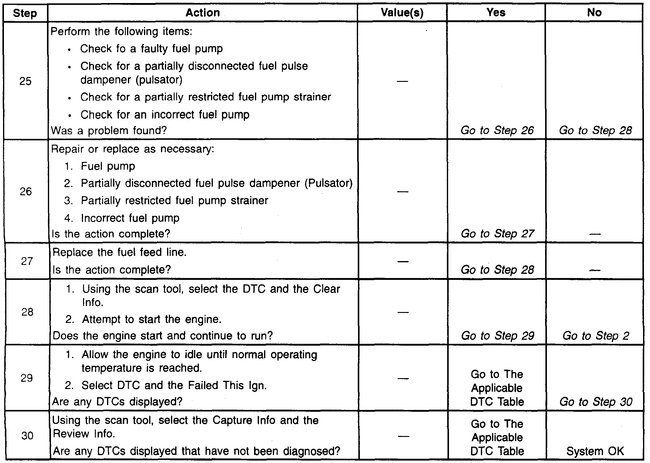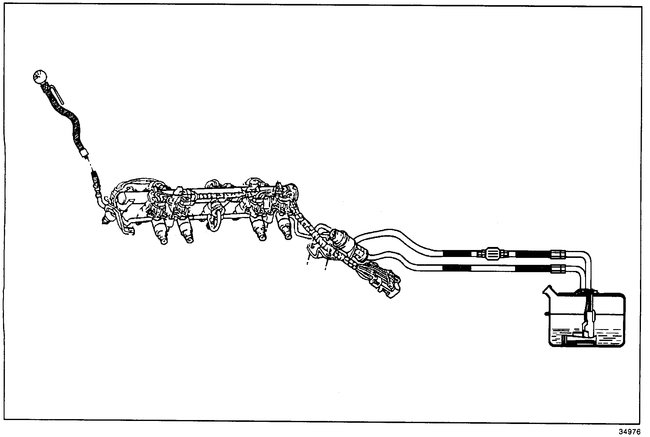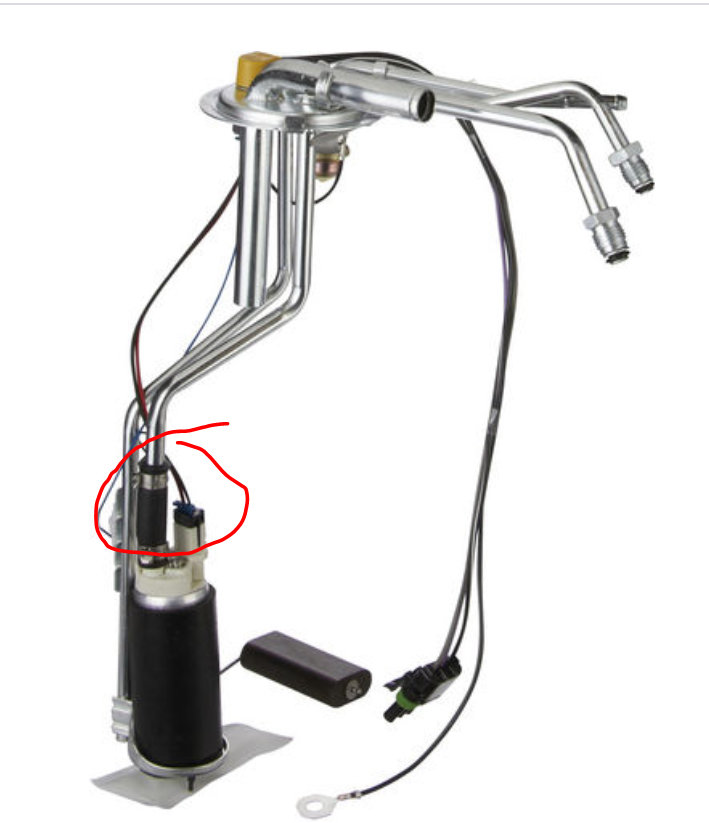Hi,
The fuel pressure regulator is designed to reduce pressure, so if you don't have enough pressure, either the pump is bad or you have a plugged fuel filter. Have you checked pressure? It should be between 60 and 65 psi. I have a feeling it is lower.
Although there could be something stuck in the regulator preventing pressure to build, since you replaced it twice, chances are that isn't the problem.
https://www.2carpros.com/articles/how-to-check-fuel-system-pressure-and-regulator
_____________________________________
If you look below, I attached 5 pics. The pics are in order and consist of a diagnostic flow chart related to fuel pressure problems. Take a look through them and see if they help.
_____________________________________
In my manual, this comes after the flow chart.
CIRCUIT DESCRIPTION
When you turn the ignition switch ON, the Vehicle Control Module (VCM) turns on the in-tank fuel pump. The pump remains on as long as the engine is cranking or running and the VCM is receiving reference pulses. If there are no reference pulses, the VCM shuts off the fuel pump within 2 seconds after you turn the ignition ON or the engine stops.
The pump is attached to the fuel level meter assembly inside the fuel tank. The pump is designed to provide fuel at a pressure above the regulated pressure needed by the injectors. The pressure regulator keeps the fuel available to the injector at a regulated pressure. Unused fuel is returned to the fuel tank by a separate line.
DIAGNOSTIC AIDS
Tools Required, J 34730-1A Fuel Pressure Gage in J 34730-E or J 34730-1A Fuel Pressure Gage with J 34730-250 Fuel Pressure Adapter Kit.
TEST DESCRIPTION
The numbers below refer to the step numbers on the diagnostic table.
2. Wrap a shop towel around the fuel pressure connection to absorb any small amount of fuel leakage that may occur when installing the fuel pressure gauge. Turn ON the ignition, the fuel pressure should be 385-430 kPa (56-62 psi). This pressure is controlled by a spring pressure within the regulator assembly.
4. The fuel pressure that continues to fall is caused by one of the following items:
The in-tank fuel pump check valve not holding.
A partially disconnected fuel pulse dampener (pulsator).
The fuel pressure regulator valve leaking.
An SFI injector is leaking.
5. When the engine is idling, the manifold pressure is low (high vacuum) and is applied to the fuel pressure regulator diaphragm. This will offset the spring and result in a lower fuel pressure. This idle pressure will very somewhat depending on the barometric pressure; however, the pressure idling should be less indicating the pressure regulator control.
16. The fuel pressure less than 385 kPa (56 psi), falls into the following 3 areas:
A regulated pressure but less than 385 kPa (56 psi). Amount of fuel to injector OK, but pressure is too low. System will run lean and may set a DTC. Also, hard starting cold and overall poor performance or may not start at all. Refer to Engine Cranks but Does Not Run
A restricted flow causing pressure drop - Normally, a vehicle with a fuel pressure of less than 300 kPa (44 psi) at idle is undriveable. However, if the pressure drop occurs only while driving, the engine will normally surge then stop running as the pressure begins to drop rapidly. This is most likely caused by a restricted fuel line or plugged filter.
A leaking or contaminated pressure regulator valve or seat interface may not allow the regulated pressure to be achieved.
Notice: Do not allow the fuel pressure to exceed 517 kPa (75 psi) because damage to the fuel pressure regulator may result.
22. Restricting the fuel return line allows the fuel pressure to build above regulated pressure. With the battery voltage applied to the fuel pump test terminal, the pressure should rise above 430 kPa (62 psi), as the valve in the return line is partially closed.
_____________________________________________
Let me know what you find or if you have other questions.
Take care,
Joe
Images (Click to make bigger)
Saturday, January 11th, 2020 AT 6:57 PM
